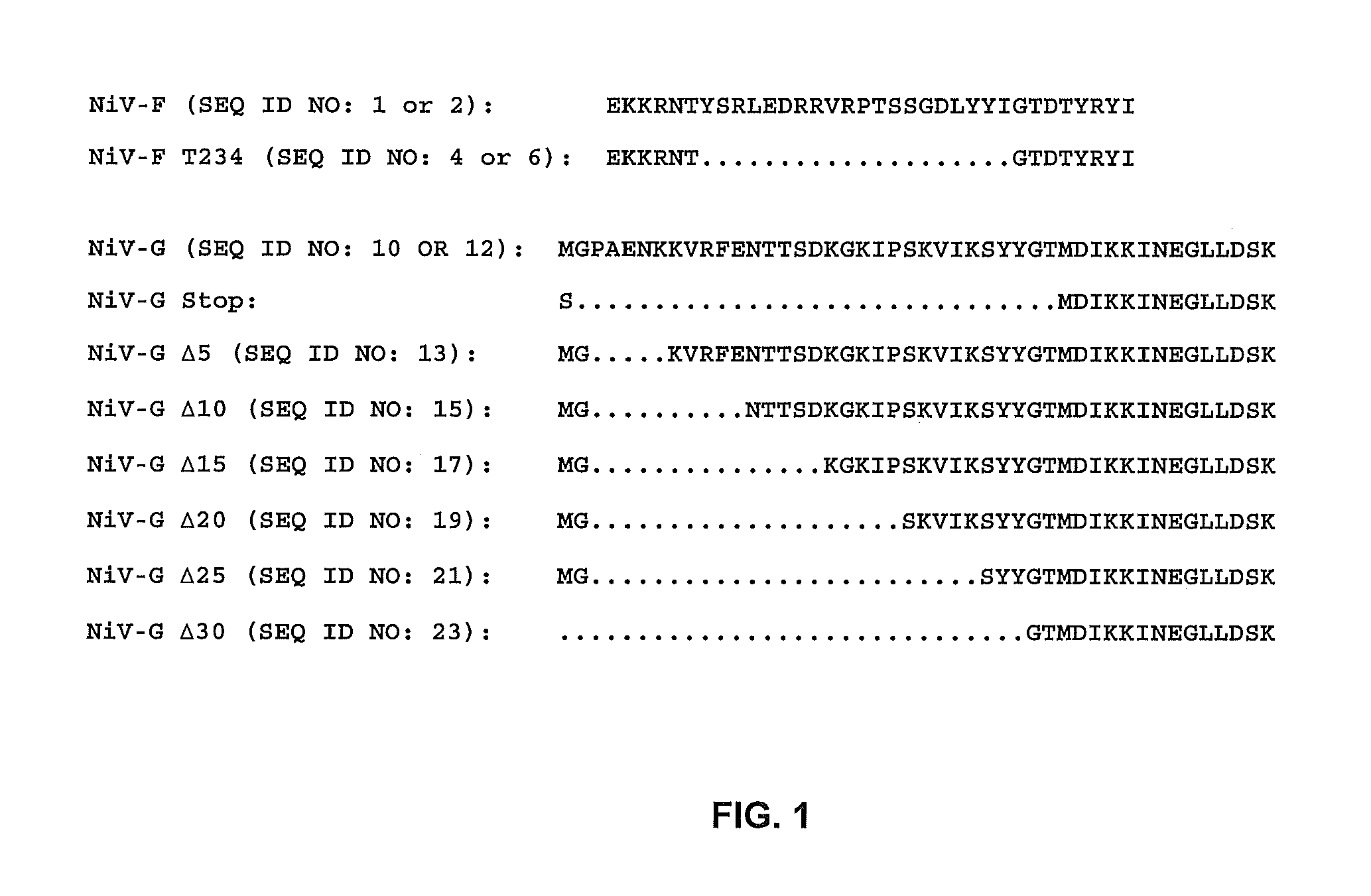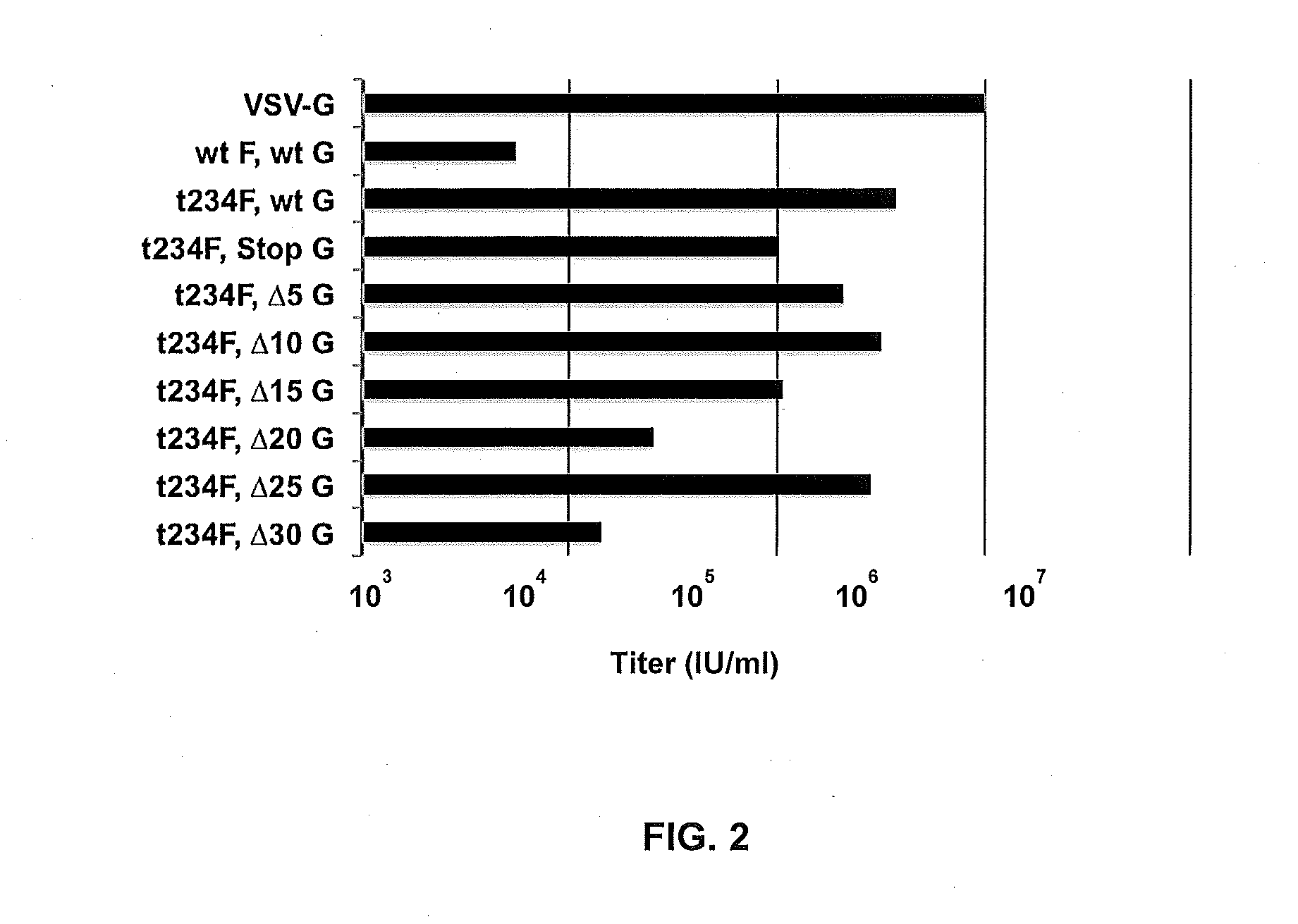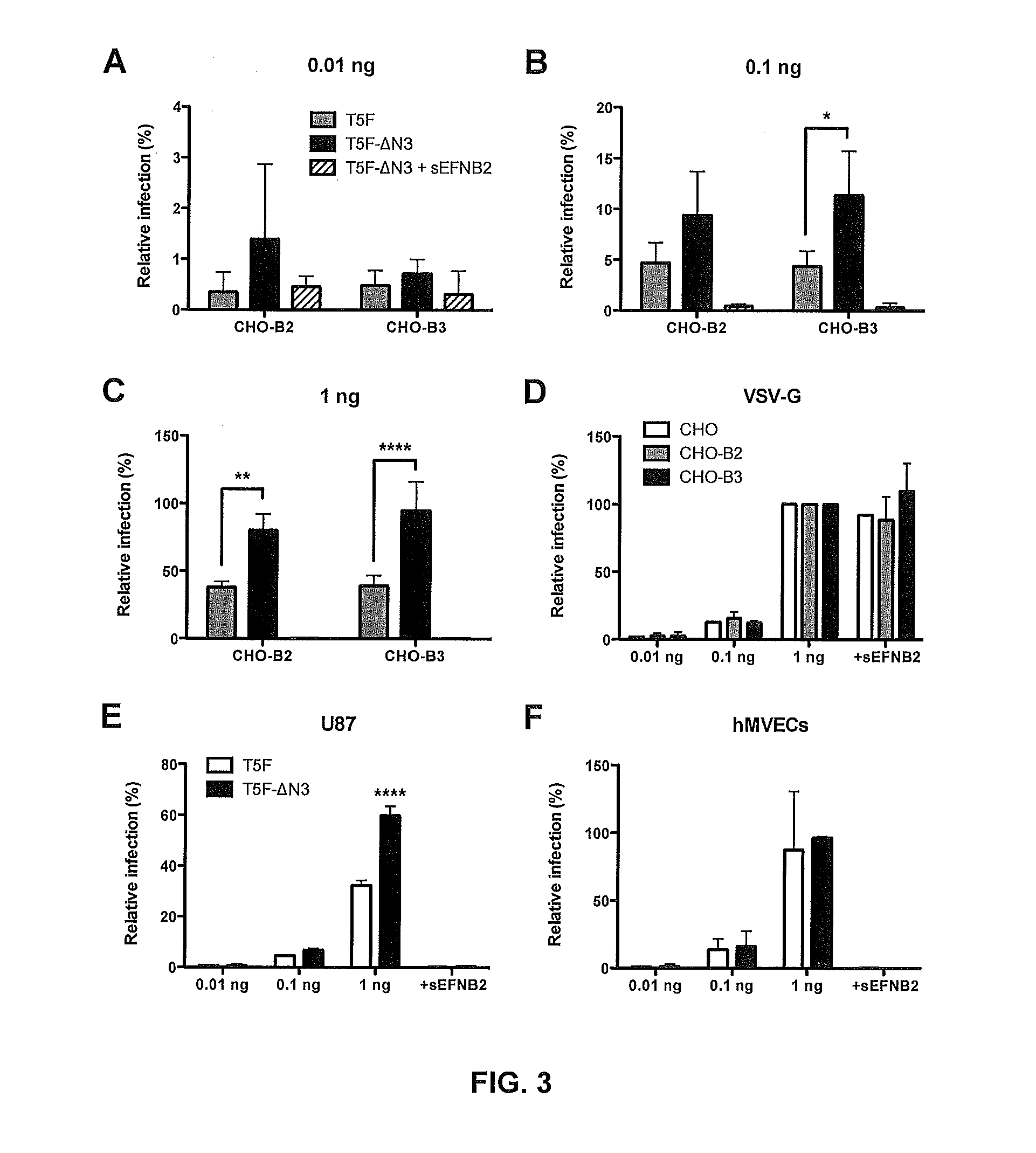Nipah virus envelope pseudotyped lentiviruses and methods of their use
a technology of lentiviruses and envelopes, applied in the field of nipah virus envelope pseudotyped lentiviruses and methods, can solve the problems of limiting the amount of vsv-gpp that can be concentrated and used for cell transduction, unable to target specific populations of cells, and apoptosis cell death, etc., to achieve the effect of increasing or decreasing the infectivity of nipah virus envelope pseudotyped
- Summary
- Abstract
- Description
- Claims
- Application Information
AI Technical Summary
Benefits of technology
Problems solved by technology
Method used
Image
Examples
example 1
Generation of Truncated Glycoproteins and NiVpp Pseudotyped Lentivirus
[0047]Previous studies have shown that pseudotyping of lentiviral vectors with unmodified paramyxoviral glycoproteins is highly inefficient. In the present study, we obtained chemically-synthesized, codon-optimized wild-type NiV-F and NiV-G nucleotides. These codon-optimized NiV-F and NiV-G sequences included a tag at the 3′ end encoding an AU1 peptide tag (DTYRYI) or a hemaglutinin peptide tag (YPYDVPDYA), respectively. These were subcloned into pcDNA3.1 vectors for mutagenesis. Variants of NiV-F and NiV-G were produced using a QuickChange site directed mutagenesis kit (Stratagene, Cedar Creek, Tex.) with primers designed to correspond to the desired deletions. A NiV-F variant, termed T5F or T234F, with a truncation of the cytoplasmic tail, as discussed above, was produced (see, e.g., Aguilar et al. (2007) J. Virol. 81:4520-4532). NiV-G variants were produced by making stepwise truncations of the cytoplasmic tail...
example 2
In Vitro and In Vivo Infection Using NiVpp Pseudotyped Lentivirus
[0050]Increasing amounts of virus (based on MOI or p24 equivalent) were added to 1×105 cells of each cell type and centrifuged at 2,000 rpm at 37° C. for 2 hours. As a specificity control, 10 nM of soluble ephrinB2 (R&D Systems) was added to the infection medium in some studies. To exclude pseudotransduction, 5 μM of nevirapine (NVP; a reverse transcriptase inhibitor) was added in some studies. For stem cell transductions, 4 ng / ml of polybrene (Sigma) was added. Following an overnight incubation with virus, the infection medium was removed and replaced with fresh medium. 72 hours post-infection, the cells were harvested and analyzed by flow cytometry for eGFP expression. For transduction of a mixed population of cells, ephrinB2+ human U87 cells were mixed with ephrinB2− non-human Chinese hamster ovary (CHO) cells at different ratios (U87:CHO ratios=1:1, 1:10, 1:100, and 1:1000), and seeded at a density of 50,000 cells ...
PUM
| Property | Measurement | Unit |
|---|---|---|
| stability | aaaaa | aaaaa |
| concentration | aaaaa | aaaaa |
| affinity | aaaaa | aaaaa |
Abstract
Description
Claims
Application Information
 Login to View More
Login to View More - R&D
- Intellectual Property
- Life Sciences
- Materials
- Tech Scout
- Unparalleled Data Quality
- Higher Quality Content
- 60% Fewer Hallucinations
Browse by: Latest US Patents, China's latest patents, Technical Efficacy Thesaurus, Application Domain, Technology Topic, Popular Technical Reports.
© 2025 PatSnap. All rights reserved.Legal|Privacy policy|Modern Slavery Act Transparency Statement|Sitemap|About US| Contact US: help@patsnap.com



